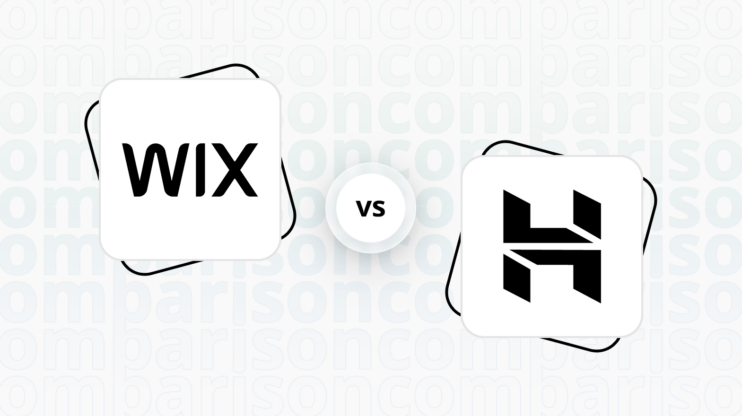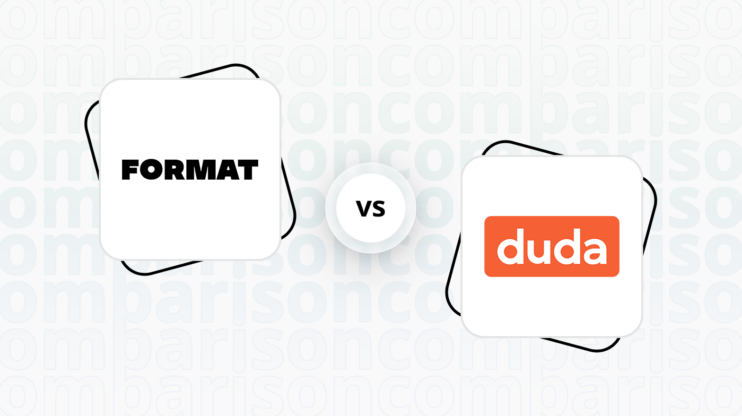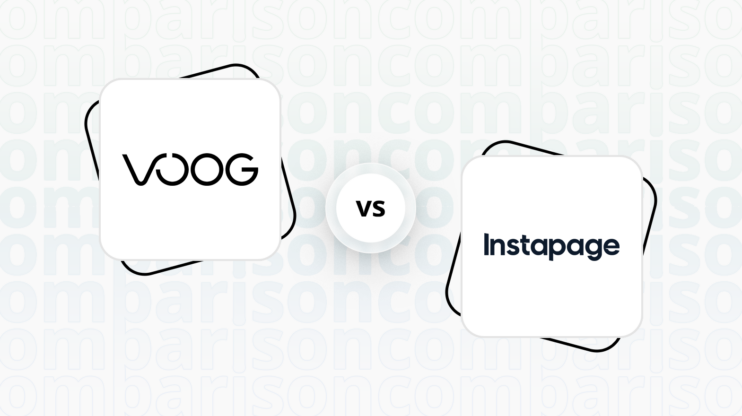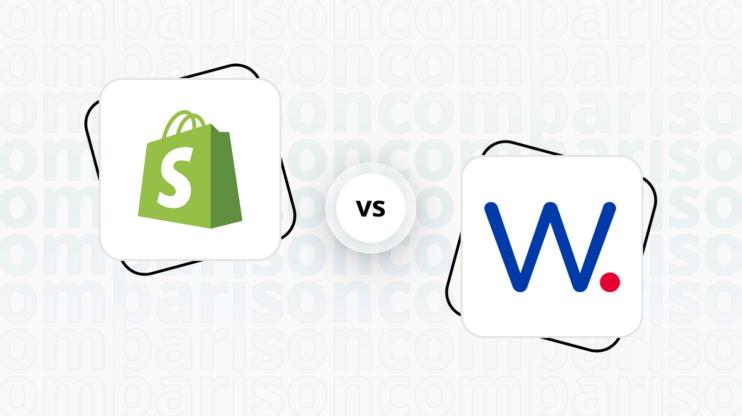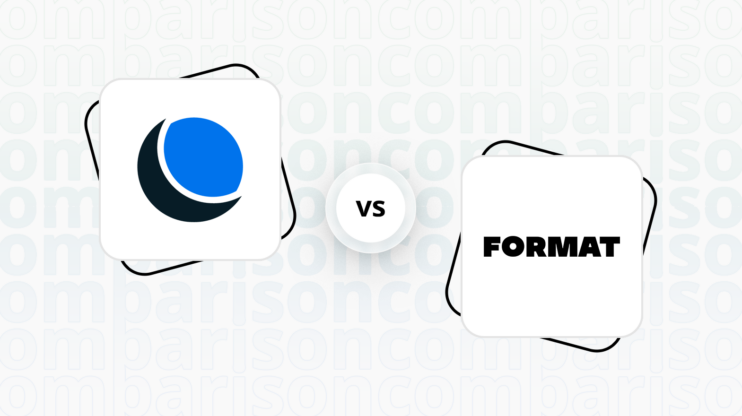Google Sites vs SubHub: Final verdict
Google Sites vs SubHub both offer unique advantages, but they cater to different needs and user bases.
-
Google Sites (Overall Grade: 5.6/10)
is ideal for users seeking a simple, collaborative website builder with seamless integration with Google services. It excels in ease of use, hosting quality, and security, making it a great choice for team projects, personal portfolios, and small business websites. However, it lacks built-in ecommerce features and advanced customization options, which may limit its appeal for more complex website needs. -
SubHub (Overall Grade: 5.6/10)
stands out for its specialized tools for creating and managing membership sites. It offers robust ecommerce capabilities, advanced marketing features, and customizable templates, making it perfect for content creators and entrepreneurs looking to monetize their content. While it has a steeper learning curve and less comprehensive support compared to Google Sites, its focus on membership and subscription models provides significant value for its target audience.

|

|
|
|---|---|---|
|
Design functionalities & templates |
4.9 |
6.8 |
|
Ease of use |
8.3 |
7.7 |
|
Ecommerce |
1.8 |
5.9 |
|
Website Editors |
7.0 |
6.9 |
|
Product testing options |
6.9 |
7.0 |
|
Price |
8.1 |
6.8 |
|
Hosting quality |
8.2 |
5.5 |
|
Website speed optimization |
3.3 |
5.6 |
|
Plugins and integrations |
6.4 |
5.7 |
|
Marketing features |
2.6 |
5.7 |
|
Customer support |
7.2 |
6.3 |
|
Security |
9.3 |
4.0 |
|
User Management |
7.8 |
5.2 |
Which one is the best for ecommerce: Google Sites or SubHub?
 1.8
1.8
 5.9
5.9
Verdict
: SubHub is the better choice for ecommerce, offering more robust features tailored for content creators and entrepreneurs, while Google Sites lacks built-in ecommerce capabilities.
-
Google Sites
: Google Sites is not designed for ecommerce. It lacks built-in ecommerce features and relies heavily on third-party integrations for any ecommerce functionality. This makes it less suitable for businesses looking to sell products directly from their website. When comparing Google Sites vs SubHub, Google Sites falls short in the ecommerce domain. -
SubHub
: SubHub excels in providing ecommerce tools for content creators and entrepreneurs. It supports PayPal and Stripe integration, physical and digital product listings, and pay-per-view products. SubHub’s focus on membership sites and content monetization makes it a more suitable choice for ecommerce compared to Google Sites.
Which one is the best for informational and business websites?
 7.2
7.2
 7.2
7.2
Verdict
: Google Sites and SubHub both score 7.2 for informational and business websites, but they cater to different needs. Google Sites is ideal for users seeking simplicity and integration with Google services, while SubHub is tailored for membership-based websites.
-
Google Sites
: Google Sites is a user-friendly platform that allows users to create websites without coding. It integrates seamlessly with other Google services, making it a great choice for team projects, personal portfolios, and small business websites. Its drag-and-drop interface and collaborative features make it easy to use, but it offers limited design customization compared to other builders. -
SubHub
: SubHub is designed specifically for creating and managing membership sites. It offers tools for setting up subscription models, managing member access, and providing exclusive content. SubHub is ideal for content creators and entrepreneurs looking to build a community and monetize their content. While it has a steeper learning curve, it provides a comprehensive toolkit for membership-based websites.
Google Sites vs SubHub: Detailed comparison
Design functionalities & templates
Design FunctionalitiesRepresents how well each platform allows for creative design and customization of websites.Score Components:
- Template Variety (30%): Range and quality of design templates.
- Customization (30%): Flexibility and options for design alterations.
- User Interface (20%): Ease and intuitiveness of the design process.
- Responsiveness (10%): Adaptability to different devices and screen sizes.
- Innovation (10%): Unique design features and tools.
 4.9
4.9
 6.8
6.8
🏆
Winner: SubHub.
SubHub offers a more comprehensive range of design functionalities and templates, making it a better choice for those seeking more customization options and variety.
Google Sites offers a limited number of templates suitable for various purposes, from personal blogs to business websites. These templates are designed for user engagement, simplicity, and functionality, allowing for customization to meet specific needs. However, compared to other website builders, Google Sites might offer less variety in templates and design customization options.
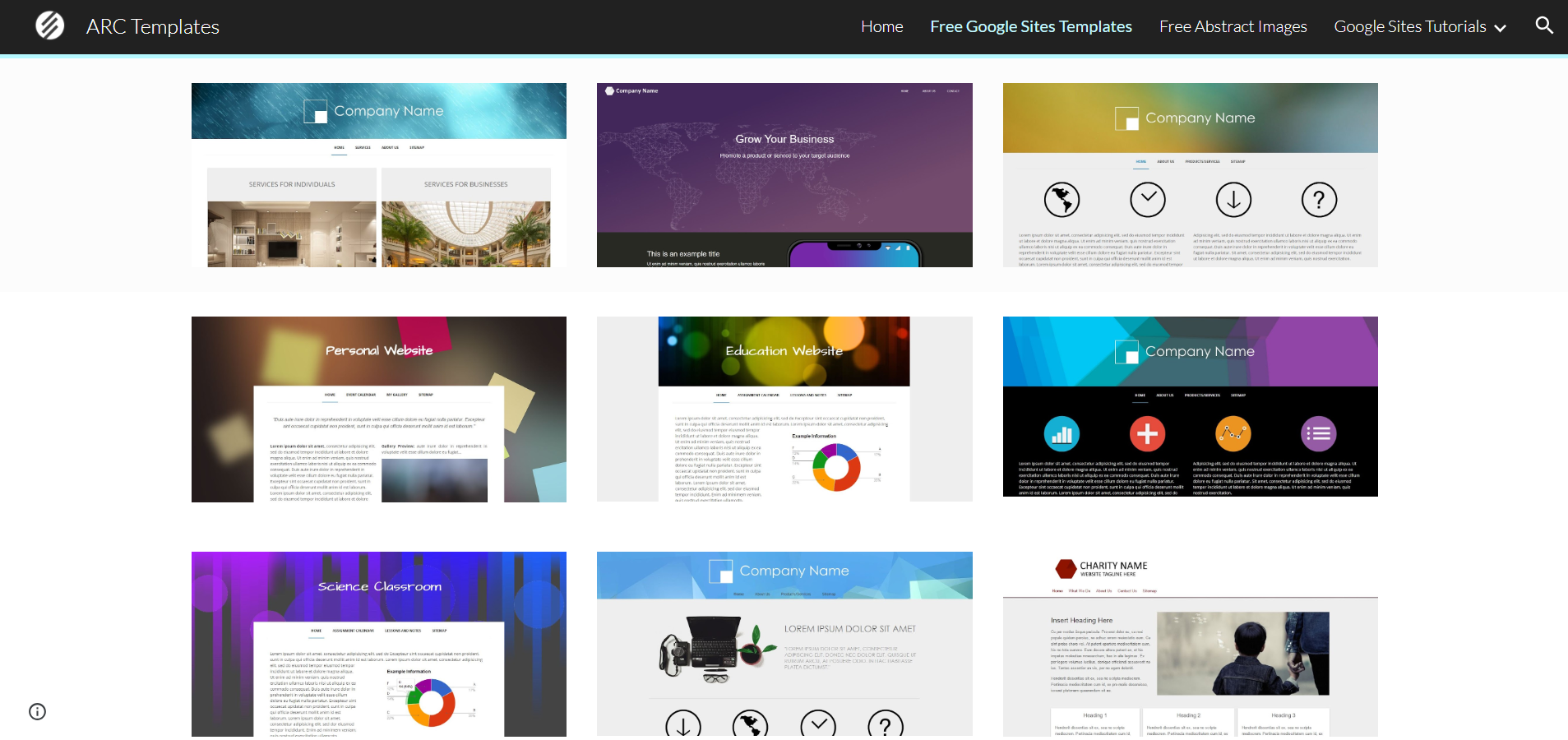

On the other hand, SubHub offers a variety of customizable membership website templates designed to cater to different needs and themes. These templates are fully customizable, allowing users to modify layouts, add or remove sections, and tailor content to fit their brand, ensuring flexibility in the design process.
Get a head start on website creation with AI
Create a custom website tailored to your business needs 10X faster with 10Web AI Website Builder!
Ease of use
Ease of useReflects the platform’s overall user-friendliness.Score
Components:
- Learning curve (40%): Quickness and ease of getting started.
- Interface design (30%): Simplicity and intuitiveness of layout.
- User guidance (20%): Quality of tutorials and support.
- Flexibility (10%): Adaptability to various user skills.
 8.3
8.3
 7.7
7.7
🏆 Winner: Google Sites
. Scoring 8.3, Google Sites offers a user-friendly interface that allows individuals with no coding experience to create and publish websites easily. SubHub, with a score of 7.7, offers a robust platform but with a steeper learning curve, especially for those new to membership site creation. If ease of use is a priority, Google Sites is the clear winner in this category.
Learning Resources
🏆 Winner: Google Sites
. While both platforms offer solid learning resources, Google Sites goes a step further with its wide array of detailed tutorials and active community forums, making it easier for users to learn and adapt.
For ecommerce
EcommerceMeasures the platform’s effectiveness in supporting online business activities.Score Components:
- Ecommerce themes and templates (20%): Variety and design of templates.
- Product management (25%): Ease of managing and organizing products.
- Payment options (25%): Variety and convenience of payment methods.
- Ecommerce features (20%): Features for managing an ecommerce store.
- Integration (10%): Compatibility with external e-commerce tools and services.
 1.8
1.8
 5.9
5.9
When it comes to ecommerce, SubHub outperforms Google Sites. While Google Sites lacks built-in ecommerce features, SubHub offers a range of tools tailored for content creators and entrepreneurs who aim to build a community and monetize their content.

|

|
|
|---|---|---|
|
Ecommerce themes and templates |
0.0 |
3.0 |
|
Product page customization |
0.0 |
6.5 |
|
Payment processing and commissions |
1.0 |
7.0 |
|
POS capabilities |
0.0 |
0.0 |
|
Payment gateways |
2.0 |
6.0 |
|
Product numbers |
0.0 |
5.0 |
|
Additional ecommerce features |
0.5 |
4.5 |
Google Sites ecommerce features:
Google Sites itself does not have built-in eCommerce features. However, you can integrate eCommerce functionalities into a Google Sites website by embedding third-party tools or widgets, linking to an external eCommerce platform, or using buttons that link to payment processors. For instance, you could use Google Forms for order forms and integrate PayPal or another payment service for transactions. To have a full-fledged eCommerce platform with Google Sites, you’d need to rely on these external integrations or services.
SubHub ecommerce features:
- Paypal and Stripe integration
- Physical and Digital product listings
- Pay-per view products
Ecommerce themes & templates
Neither Google Sites nor SubHub offer ecommerce-specific templates. Google Sites is primarily a tool for creating simple websites, including personal sites, project sites, and intranets. SubHub, on the other hand, is designed specifically for creating and managing membership sites.
Product page customization
Google Sites lacks any product page customization features, as the products can be listed with embedding third-party platforms, all the customization can be done within the mentioned platforms. In contrast, SubHub offers a range of product page customization options, allowing for the addition of physical items, digital downloads, and pay-per-view content. Features include the ability to manage product variants, upload images, and set visibility preferences. Users can also implement SEO strategies through meta tags and manage tax settings. Additional functionalities include member-specific discounts, image carousels, and individualized shipping costs.
Payment processing
You can integrate payment gateways into Google Sites using external tools or links, not through native features. This can be done by embedding HTML code for payment buttons from services like PayPal, Square, or Stripe, or by linking to an external checkout page. Third-party eCommerce widgets also offer a way to add payment functionalities. However, Google Sites doesn’t offer the comprehensive eCommerce capabilities that dedicated platforms provide.
SubHub website builder supports two main payment gateways: Stripe and PayPal. These integrations allow for secure payment processing for subscriptions and store items using debit or credit cards. The platform itself does not charge commissions on transactions.
Website Editors
Website EditorsEvaluates the platforms’ website building and editing capabilities.Score Components:
- Customization tools (40%): Range and power of editing features.
- Editor usability (30%): User experience within the editor.
- Design flexibility (20%): Freedom in layout and design changes.
- Update and maintenance ease (10%): Simplicity of updating and maintaining the site.
 7.0
7.0
 6.9
6.9
🏆
Winner: Google Sites
. Google Sites, with a score of 7.0, offers a user-friendly website builder editor that allows users to create and design websites without needing coding knowledge. With its drag-and-drop interface, users can easily add, customize, and arrange elements such as text, images, and videos on their web pages. It also provides a variety of templates and design options to help users get started quickly and ensure their site looks professional. Additionally, Google Sites integrates seamlessly with other Google services, enabling the incorporation of Google Docs, Sheets, Slides, and Maps directly into the website.
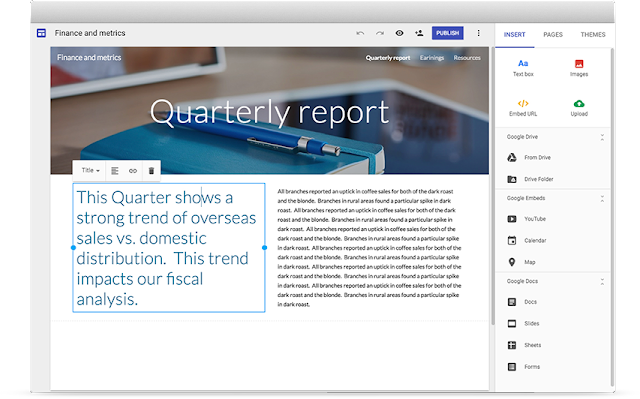
SubHub’s editor, scoring 6.9, is tailored for creating and managing membership sites, catering to content creators and entrepreneurs aiming to monetize their offerings. Its features encompass customizable templates, diverse content publishing options, and flexible subscription plans with seamless integration for recurring revenue through payment processors. Additionally, SubHub supports online course creation, provides marketing tools like landing page builders, and offers detailed analytics for monitoring website metrics.
Mobile editor/app
 0
0
 4.0
4.0
🏆
Winner: SubHub
. Both Google Sites and SubHub do not offer a dedicated mobile editor app. However, SubHub allows users to manage some content on their website using the mobile browser version. This feature provides some level of convenience for users who need to make quick updates or changes to their website on the go.
On the other hand, Google Sites does not offer any mobile editing capabilities, which can be a limitation for users who prefer to work on their website from a mobile device. Therefore, SubHub has a slight edge over Google Sites in this category due to its limited mobile editing capabilities.
Product testing options
Product Testing OptionsAssesses the options for trying out platform features before commitment.Score Components:
- Trial quality (40%): Extent and usefulness of the trial or free version.
- Feature accessibility (30%): How many features are available to test.
- Trial duration (20%): Length of the trial period.
- Ease of transition (10%): Smoothness of moving from trial to paid plans.
 6.9
6.9
 7.0
7.0
Overall Result
:
SubHub wins
. SubHub scores slightly higher than Google Sites in product testing options, with a score of 7.0 compared to Google Sites’ 6.9. Both platforms offer a 14-day free trial, but SubHub edges out with its 7-day money-back guarantee. Google Sites does offer a free version, which SubHub does not, but SubHub allows testing of premium features during the free trial, while Google Sites only allows testing of some premium features within the trial period.

|

|
|
|---|---|---|
|
Free Plan |
Yes |
No |
|
Trial Duration |
14 days | 14 days |
|
Testing Premium Features |
Some features within trial |
During the free trial |
|
Money Back Guarantee |
No |
7 days |
Price
PriceLooks at the cost-effectiveness and value for money of each platform.Score Components:
- Plan value (40%): What each pricing tier offers.
- Transparency and clarity (30%): Clearness of pricing structures.
- Flexibility of plans (20%): Range of options to suit different budgets.
- Hidden costs (10%): Additional expenses not included in the plan.
 8.1
8.1
 6.8
6.8
Google Sites and SubHub offer different pricing structures, with Google Sites charging per user and SubHub offering tiered plans based on features and storage.
Google Sites offers a discount for annual billing, as does SubHub. Google Sites has enterprise plans for larger organizations requiring advanced features, while SubHub does not offer an enterprise plan.

|

|
|
|---|---|---|
|
$0-$10 |
Business Starter ($7.20/month): This plan includes basic features suitable for individuals or small businesses, offering professional email through Gmail, 30GB of storage per user, and video meetings for up to 100 participants. It allows to manage 1 website and there is no limitation on number of pages. Value for price: 6.0 |
No offering at this amount. |
|
$10-$20 |
Business Standard ($14.40/month): Suitable for growing businesses, this plan provides 2 TB of storage per user, video meeting capacity for up to 150 participants with recording features, and access to smart booking pages and shared drives. It allows to manage 1 website and there is no limitation on number of pages. Value for price: 7.5 |
No offering at this amount. |
|
$20-$30 |
Business Plus ($21.60/month): Designed for larger businesses needing more robust capabilities, offering 5 TB of storage per user, advanced security options, and video meetings for up to 500 participants. It allows to manage 1 website and there is no limitation on number of pages. Value for price: 8.5 |
No offering at this amount. |
|
$40-$50 |
No offering at this amount. |
Starter ($47/month): Up to 500 members, 5 GB storage, secure payment processing, course builder, 5 landing pages, e-commerce. Value for price: 6.5 |
|
$90-$100 |
No offering at this amount. |
Pro ($97/month): Up to 2000 members, 50 GB storage, removes SubHub branding, 15 landing pages, along with Starter features. Value for price: 7.5 |
|
$100+ |
No offering at this amount. |
Premium ($147/month): Unlimited members, 200 GB storage, email white labelling, 30 landing pages, plus all Pro features. Value for Price: 8.5 |
location. As a result in rare cases the prices displayed here can differ from the ones you see on their
websites.
Hosting quality
Hosting
qualityExamines the reliability and performance of the hosting solutions.Score Components:
- Uptime (40%): Consistency and reliability of website availability.
- Speed (30%): Loading times and performance.
- Bandwidth and storage (20%): Sufficiency of resources provided.
- Data centers (10%): Quality and distribution of hosting infrastructure.
 8.2
8.2
 5.5
5.5
🏆
Winner: Google Sites
Google Sites offers cloud-based managed hosting with a 99.9% uptime guarantee and operates 21 data centers globally. SubHub, while offering managed cloud hosting, does not provide uptime statistics or guarantees and does not disclose the locations of its data centers. This makes Google Sites the clear winner in terms of hosting quality.

|

|
|
|---|---|---|
|
Do they offer hosting? |
Yes, basic storage with 100MB free per site, can be increased by upgrading to Google Workspace |
Yes, from 5GB to 200GB storage limitation depending on the plan and daily backups |
|
Data Centers: |
Google operates a total of 21 data centers across the globe: 2 in Asia, 5 in Europe, 13 in US and 1 in South America |
Subhub does not disclose the locations of its data centers |
|
Type of hosting: |
Cloud based managed hosting |
Managed Cloud Hosting |
|
Uptime: |
99.9% |
Subhub does not provide uptime statistics |
|
Uptime Guarantee: |
Yes, 99.9% |
No |
Website Speed Optimization
Website Speed OptimizationEvaluates optimization of website loading timesScore Components:
- PageSpeed Score (30%): Google’s score indicating performance optimization.
- Loading Time (30%): The average time until a website is fully interactive.
- Mobile Optimization (15%): Optimization effectiveness for mobile devices.
- Resource Optimization (15%): Optimizing images, scripts, and other heavy resources.
- CDN Usage (10%): Use of CDN to enhance speed across geolocations.
 3.3
3.3
 5.6
5.6
🏆 Winner: SubHub
Both Google Sites and SubHub prioritize website performance and page speed, but SubHub has a slight edge in this category due to its focus on image optimization, caching, and mobile-optimized design.

|

|
|
|---|---|---|
|
Focus |
Automated Optimization, CDN, Mobile Optimization, Browser Caching, Code Minification, Use of AMP |
Image Optimization, Caching, Mobile Optimized design |
|
Performance Tools |
Google Lighthouse, PageSpeed Insights |
Google PageSpeed Insights Integration |
|
Key Strategies |
Automated Optimization, CDN, Mobile Optimization, Browser Caching, Code Minification, Use of AMP |
Image Optimization, Caching, Mobile Optimized design |
|
Load Times |
Google does not disclose statistics about website Page Speed scores, or load times |
Load times and PageSpeed scores vary depending on optimization and website complexity |
|
Page Speed Scores Range |
Google does not disclose statistics about website Page Speed scores, or load times |
Load times and PageSpeed scores vary depending on optimization and website complexity |
|
Core Web Vitals Improvement |
Emphasis on LCP, FID, CLS improvements |
Subhub does not provide any information on their Core Web Vitals improvements |
Google Sites, part of the Google Workspace package, is a structured web page-creation tool that allows users to build websites easily without having to know how to code. It uses a drag-and-drop interface and integrates various Google services, such as Google Drive, Maps, and Calendar, directly into the websites. Google Sites emphasizes automated optimization, CDN, mobile optimization, browser caching, code minification, and the use of AMP for speed optimization. However, Google does not disclose statistics about website Page Speed scores or load times.
On the other hand, SubHub is a website builder designed specifically for creating and managing membership sites. It offers a range of tools tailored for content creators and entrepreneurs who aim to build a community and monetize their content. SubHub focuses on image optimization, caching, and mobile-optimized design for speed optimization. However, load times and PageSpeed scores vary depending on optimization and website complexity. SubHub does not provide any information on their Core Web Vitals improvements.
Get a head start on website creation with AI
Create a custom website tailored to your business needs 10X faster with 10Web AI Website Builder!
Plugins and integrations
Plugins and integrationsMeasures the range and effectiveness of additional plugins and integrations.Score Components:
- Variety of options (40%): Range of available add-ons.
- Integration smoothness (30%): Ease of integrating plugins into the site.
- Quality of plugins (20%): Functionality and reliability of the options.
- Custom integration capabilities (10%): Support for custom or third-party integrations.
 6.4
6.4
 5.7
5.7
🏆 Winner: Google Sites.
Google Sites scores 6.4, offering a wide array of plugins and extensions to enhance website functionality. It caters to various needs such as social media integration, e-commerce, chats, forms, video, audio, and more. SubHub, scoring 5.7, is designed with a focus on simplicity and integrated functionalities for building membership-based websites. While it provides a comprehensive toolkit for creating and managing membership sites, its range of external integrations might be seen as limited compared to Google Sites.

Marketing Features
Design FunctionalitiesRepresents how well each platform allows for creative design and customization of websites.Score Components:
- Template Variety (30%): Range and quality of design templates.
- Customization (30%): Flexibility and options for design alterations.
- User Interface (20%): Ease and intuitiveness of the design process.
- Responsiveness (10%): Adaptability to different devices and screen sizes.
- Innovation (10%): Unique design features and tools.
 2.6
2.6
 5.7
5.7
🏆
Overall Winner: SubHub
. SubHub stands out for its more advanced marketing tools, especially in email marketing, blogging, and ads and promotions. Google Sites is strong in SEO and analytics, but lacks in email marketing, blogging, and ads and promotions.

|

|
|
|---|---|---|
|
SEO Tools |
Basic SEO settings |
Advanced SEO settings |
|
Email Marketing |
No |
Yes, both built in and through integration of Mailchimp |
|
Blogging |
No |
Yes |
|
Social Media Integration |
Yes, you can easily embed social media links and widgets into a Google Site. |
No |
|
Analytics and Reporting |
Yes, Google Analytics integration |
Yes, Google Analytics integration |
|
Ads and Promotions |
No |
Yes |
Customer Support
Customer supportEvaluates the quality and availability of support options.Score Components:
- Response time (40%): Speed of support responses.
- Support quality (30%): Effectiveness and helpfulness of the support.
- Availability (20%): Range of support channels (phone, chat, email).
- Resource richness (10%): Quality of self-help and educational materials.
 7.2
7.2
 6.3
6.3
🏆 Winner: Google Sites
. In the Google Sites vs SubHub comparison, Google Sites takes the lead with a customer support score of 7.2. Google Sites offers a range of support options, including a Help Center, community forums, and direct support for Google Workspace customers. Enterprise users benefit from 24/7 phone and email support, with the option to upgrade to enhanced support levels.
SubHub, with a customer support score of 6.3, provides support primarily through email and a support portal. While it offers an FAQ section for quick answers, it lacks the comprehensive support options available to Google Sites users, particularly for enterprise-level support. This makes Google Sites a more robust choice for users seeking extensive and readily available customer support.
Security
SecurityLooks at the platforms’ security measures and data protection.Score Components:
- Data protection (40%): Safeguards for user and customer data.
- SSL and encryption (30%): Implementation of secure connections.
- Compliance (20%): Adherence to industry security standards.
- Regular updates (10%): Frequency of security updates and patches.
 9.3
9.3
 4.0
4.0
🏆
Winner: Google Sites
. Google Sites, with a security score of 9.3, offers robust security measures including SSL encryption, two-factor authentication, and automatic malware scanning. It also benefits from Google’s regular security updates and compliance with international data protection standards. Google Sites’ infrastructure offers DDoS protection and data redundancy, safeguarding against data loss and maintaining site accessibility under heavy traffic.
On the other hand, SubHub, with a security score of 4.0, does not disclose any specific information about the website security measures it provides. While it does emphasize compliance with GDPR and CCPA regulations in its privacy policy, the lack of transparency regarding website security measures is a concern.
AI Capabilities
AI capabilitiesMeasures the effectiveness of AI-driven features and tools.Score Components:
- Automation efficiency (40%): Impact of AI on streamlining processes.
- Personalization (30%): AI-driven customization for users or customers.
- AI-Assisted design (20%): Role of AI in website design and functionality.
- Data analysis (10%): Use of AI in interpreting user data and analytics.
 0
0
 0
0

|

|
|
|---|---|---|
|
Personalized Design |
|
|
|
SEO Optimization |
|
|
|
Customer Behavior Analysis |
|
|
|
Sales Predictions |
|
|
|
Inventory Management |
|
|
|
Content Generation |
|
|
Neither Google Sites nor SubHub offer AI capabilities. Both platforms focus on providing straightforward, user-friendly website building tools without the use of AI. While Google Sites is part of the Google Workspace package and could potentially integrate with Google’s AI tools in the future, currently, it does not offer any AI features. Similarly, SubHub, while tailored for creating and managing membership sites, does not utilize AI in its platform.
User Management
User ManagementAssesses the platforms’ capabilities in managing user roles, permissions, and accessibility.Score Components:
- Role Customization (40%): Flexibility in creating and defining user roles and
permissions. - Ease of Management (30%): User interface and tools for managing users.
- Access Control (20%): Effectiveness of access control measures for different user
levels. - Scalability (10%): Ability to manage a growing number of users efficiently.
 7.8
7.8
 5.2
5.2
🏆 Winner: Google Sites
. Google Sites allows multiple users to collaborate with different roles, including Owners, who have full control, and Editors, who can modify content but not site settings. There’s no strict limit on the number of users who can edit a site, allowing flexibility in management and development. Viewers can only see the site, with no editing permissions. This structure supports collaborative website building with varied levels of access and control for different users.
On the other hand, SubHub allows multiple user accounts, however the platform does not specify the how many accounts are supported. It provides different roles such as:
SubHub User Roles and Access Levels:
| Role | Description | Access Highlights |
|---|---|---|
| Administrator | Full access to the platform except for Homepage and Course Editor. | Can manage all aspects of the platform, including content, store, and member management. |
| Content Management | Focuses on managing and organizing content within the platform. | Can access and manage content-related features but does not have access to Homepage or Course Editor. |
| Store (access only) | Specializes in handling the platform’s store features. | Limited to store management functions; no access to Homepage, Course Editor, or member management. |
| Member Manager (access only) | Oversees member accounts, roles, and subscriptions. | Can manage members and their subscriptions but cannot access Homepage, Course Editor, or store management. |
| Origin Admin Email | The initial administrator with the highest level of access, including Homepage and Course Editor. | Exclusive access to Homepage and Course Editor, on top of what the Administrator role provides. |
Additional Features

|

|
|
|---|---|---|
|
SSL Certificate |
|
|
|
Custom Domain |
|
|
|
Free Custom Domain Included |
|
|
|
International Domains |
|
|
|
Mobile Responsive |
|
|
|
Page Speed |
|
|
|
Website Builder Mobile App |
|
|
|
Convert a Website To An App |
|
|
|
Website Analytics |
|
|
|
Multilingual Sites |
|
|
|
Multiple Users |
|
|
Google Sites vs SubHub: User Feedback
Users consistently praise Google Workspace, particularly Google Sites, for its seamless integration, ease of use, and collaborative features, making it a go-to solution for various professional and educational needs. The platform’s simplicity and user-friendly interface are lauded, enabling effortless website creation and sharing of information within organizations. While some users desire more customization options and additional features, overall, Google Workspace remains highly valued for its versatility and streamlined workflow facilitation.
User feedback on SubHub presents a mix of positive and negative experiences, emphasizing the platform’s feature-rich environment and customizable templates. Users appreciate the flexibility and the quality of customer service, highlighting the platform’s continual updates and support as key benefits. However, some users express dissatisfaction with aspects such as the platform’s interface, lack of community features, and service fees for ticket resale. Concerns were also raised about the custom design service and mobile-friendly solutions taking longer than expected.
The making of this blog
We followed a clear, step-by-step process to write and research this article.
Google Sites vs SubHub: FAQ
Which platform is better for building a membership site, Google Sites or SubHub?
Can I use Google Sites and SubHub for ecommerce?
Which platform offers better design and customization options?
How do Google Sites and SubHub compare in terms of ease of use?
Which platform provides better customer support?
How do the platforms compare in terms of security?
Are there any AI capabilities in Google Sites or SubHub?
Which platform is better for collaborative projects?










